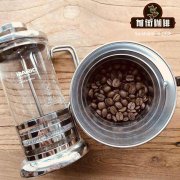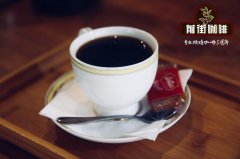What is cold coffee? Starbucks cold extract coffee what is the difference between cold extract and ice droplets nitrogen coffee

Professional coffee knowledge exchange more coffee bean information please follow the coffee workshop (Wechat official account cafe_style)
According to Mintel, a global market analysis and research firm, sales of iced coffee in the United States have increased by 75% in the past decade. With the cold extraction method used by leading coffee makers in BlueBottle and Stumptown Coffee, and the large-scale promotion of Starbucks, cold-extracted coffee has become a particularly attractive category of coffee, with sales of iced coffee up 338.9% from 2010 to 2015.
Although the extraction speed is slow at low temperature, in terms of flavor, low temperature extraction coffee is more mellow and popular because high temperature can easily decompose tannic acid in coffee into pyrowu acid, resulting in acidity and bitterness. Common cold brewed coffee, iced American coffee, ice drop coffee and so on, although they are all low-temperature products, but the production process and flavor are very different.
Cold extract / cold brewed coffee (COLD BREW)
The concept of cold-extracted coffee is similar to cold-brewed tea. During the extraction process, the beans are ground, injected with cold water, soaked in a low temperature for at least 12 hours, and then filtered out before drinking.
This cold bubble method will magnify the various flavors and aromas of coffee, reduce the acidity, and make the flavor cleaner and purer. The characteristic is that the more cold the drink, the better the flavor. It is more popular in the United States to add equal proportion coconut water, which is more popular in the United States to add equal proportion of coconut water. Each recipe has its own flavor.
Nitrogen cold extracted coffee (NITRO COLD BREW)
Cold coffee injected with nitrogen will produce dense bubbles, making nitrogen ice drop coffee very beer at first glance, so nitrogen coffee is also known as "beer coffee". Bubbles not only smooth the texture of the coffee, but also feel as if cream has been added. Many drinkers feel that it tastes more mellow than the original cold-extracted coffee, even without adding sugar. Innovation in technology and brewing makes iced coffee take on a new look.
Ice drop Coffee (ICE DRIP)
Ice droplets use a mixture of ice water below 5 degrees C to let the ice melt naturally and control the speed at which ice water drips into coffee powder through a valve. Ice water drops slowly dissolve the flavor of coffee in coffee powder and leak the extract bit by bit. The time of complete extraction is about 2 to 8 hours. In order to get a better taste, it takes 12 to 48 hours of cold storage and fermentation time. The amount of each extraction is very small (usually 30 to 60 milliliters). Generally, the concentration is very high without ice. If the coffee is too strong, it will be diluted with ice according to your taste. Because of the slow process, ice drop coffee is more expensive, but tastes excellent.
American barista champion Laila once said in an exclusive interview that ice drop coffee has more aroma and more delicate and subtle taste than cold coffee.
Iced American coffee (ICE AMERICANO)
Iced American coffee is extracted by Italian coffee machine at high temperature. finally, the coffee liquid is poured on ice cubes and added ice water according to personal preference, which is similar to the flavor of general high temperature extracted coffee. Ice cubes and ice water only have cooling and dilution effects.
Japanese iced coffee (Japanese-style cold coffee)
Japanese iced coffee is not ice drop coffee, but some people say it even tastes better than ice drop coffee because they believe that some special odor molecules need to be heated to extract. The method is to cool the extract of the hand-brewed coffee directly by placing the cup with ice under the filter cup of the hand-brewed coffee. If you want to save time, it is also an option.
The taste of coffee extracted at low temperature will change according to the degree of coffee roasting, water volume, water temperature, droplet speed, coffee grinding thickness and other factors, and the perfect proportion needs to be adjusted by time and experience. Low-temperature extracted coffee tastes sweet, low acidity, mild bitterness, and adds layers after fermentation, but it is also easy to lose the special flavor that has been released at high temperature, so the selection of bean varieties and roasting degree also requires special consideration.
Important Notice :
前街咖啡 FrontStreet Coffee has moved to new addredd:
FrontStreet Coffee Address: 315,Donghua East Road,GuangZhou
Tel:020 38364473
- Prev

What is mocha coffee? Is mocha coffee chocolate fancy coffee?
Professional coffee knowledge exchange more coffee bean information please follow the coffee workshop (Wechat official account cafe_style) what is mocha coffee? Is mocha coffee chocolate fancy coffee? When it comes to Yemen Coffee, the hometown of mocha coffee, "mocha" must be mentioned. Everyone has heard of "mocha coffee". What exactly is "mocha"? There are many answers to this question.
- Next

What is caffeine? How much a day is normal? What does coffee have to do with caffeine?
Professional coffee knowledge exchange more coffee bean information Please pay attention to the coffee workshop (Wechat official account cafe_style) caffeine plays an important role in the busy life of modern people. Many people wake up with a cup of coffee in the morning, their blood sugar rises after lunch, and their minds feel drowsy. Many people will want to have another cup of caffeine to refresh themselves, such as coffee, tea and carbonated drinks.
Related
- Beginners will see the "Coffee pull flower" guide!
- What is the difference between ice blog purified milk and ordinary milk coffee?
- Why is the Philippines the largest producer of crops in Liberia?
- For coffee extraction, should the fine powder be retained?
- How does extracted espresso fill pressed powder? How much strength does it take to press the powder?
- How to make jasmine cold extract coffee? Is the jasmine + latte good?
- Will this little toy really make the coffee taste better? How does Lily Drip affect coffee extraction?
- Will the action of slapping the filter cup also affect coffee extraction?
- What's the difference between powder-to-water ratio and powder-to-liquid ratio?
- What is the Ethiopian local species? What does it have to do with Heirloom native species?

